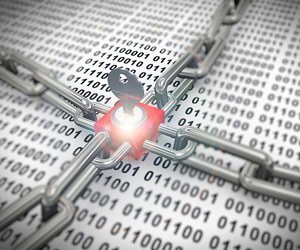To meet a demand that arose overnight for supporting remote work on a massive scale, IT and security teams within organizations needed to act fast. At the beginning of the pandemic, they were stuck with the tools at hand. Typically, this included a VPN and basic anti-malware/antivirus software, which provided a level of protection that can only be described as “okay.” However, as attackers focused on the new vulnerabilities arising from remote work, organizations found they required much more protection. Since the attack surface increased, a cohesive approach to securing remote work became necessary.
Today, most knowledge workers are working away from the office, bringing sensitive information and files outside of the corporate firewall. They are also using many SaaS apps and cloud services. These developments demand a remote work platform that is secure by design. Trying to bolt on security and patch vulnerabilities with the proverbial finger in the dike doesn’t really work.
Using a zero-trust approach to endpoint security has become one of the most successful strategies for securing flexible or hybrid workforces (including remote work) for the long term. It starts with the assumption that every endpoint must be secured not only at sign-on, but continuously as well--as the employee uses apps and services. This is a significant change from the old castle-and-moat approach of VPN access. That approach’s shortcoming has become manifest now that remote work is ubiquitous among knowledge workers: Anyone, whether a user or an adversary, who has access to a VPN tunnel from a remote computer to your network has access to everything. One key unlocks the entire network. That’s why leaders such as Citrix have adopted the zero-trust model.
The zero-trust model itself is greatly enhanced using artificial intelligence (AI) and machine learning (ML). Intelligence enables the secure platform to analyze all aspects of every worker’s interactions in real time and searches for anomalies, making it possible to stop attacks as they are occurring rather than after the fact. Intelligent tools combine data from key points such as IP address, files accessed, activities, apps being used, and more to immediately identify any out-of-bound activities or suspicious interactions that stray from the baseline behaviors of the individual, known in every detail by the intelligent tool.
This modern approach to securing remote work dramatically improves defensive posture. And perhaps more importantly, it protects both workers and applications, which is a major cybersecurity trend. Moving away from a device-centric perspective and focusing on behaviors of apps and workers delivers a much more effective level of cybersecurity. Fully protecting both is a central reason why secure solutions such as the Citrix Workspace are becoming the foundation for secure remote work, both now and into the future.
Single Sign-On the Way it Should be
This paper presents six ways the Citrix Workspace Single Sign-On (SSO) solution delivers seamless access to all apps while improving security and the user experience.
Download NowSome organizations are already reaping the benefits of this offering. The ability to respond to the changes in how work is done and empower employees while keeping them secure drives the success of those organizations.
- One example is Synopsys, a leading semiconductor design consulting firm. The company must enable its highly-demanding design professionals and their apps. As the company moved apps to the cloud and utilized more SaaS offerings, it needed one secure environment that could support secure access and meet compliance demands.
Citrix enabled Synopsys to meet the challenge. By adopting the zero-trust approach from Citrix, they secured both apps and data, down to the level of eliminating file copy-and-paste functionality. Because everyone can focus on productive work rather that the distractions of cybersecurity, the Citrix solution supports better collaboration between employees, customers, and contractors. - Citrix Workspace is also in use at Aston Martin Red Bull Racing, which designs, manufactures, and races cars. The team is well-versed in working remotely, since the racing schedule demands that they work in many different geographies during the season.
Like any business, the team needs to keep IP secure while providing employees with access to information. Protecting car telemetry on race weekends is critical to maintaining a competitive edge. Aston Martin Red Bull Racing uses Citrix Workspace at the track and beyond to connect employees from anywhere. With secure information delivery to those that need it, there is a complete and winning team effort on each race day.
A secure, agile, and effective digital workspace is a requirement for business success. Firms that can’t support work-from-anywhere needs while eliminating barriers to apps and data will find themselves at a competitive disadvantage. In addition, they’ll be hard-pressed to hire and retain top talent. Citrix is the right answer for solving these problems and energizing the increasingly hybrid workforce.

